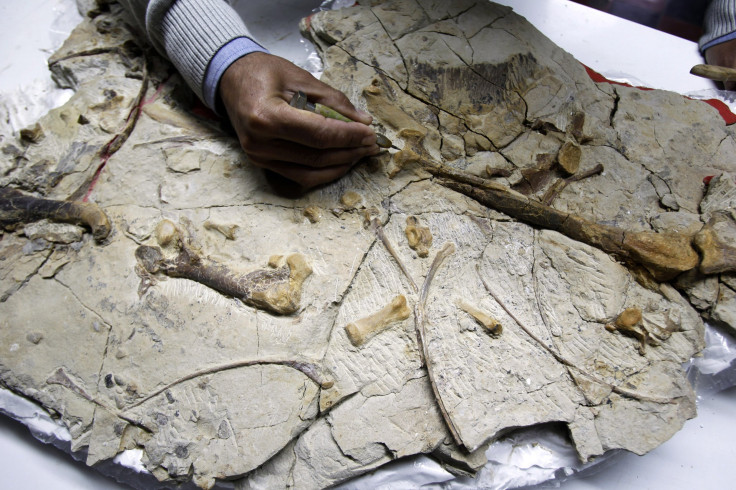Gigantic Penguins Lived With Dinosaurs 65 Million Years Ago, Fossils Show
Credit an amateur fossil hunter with locating one of the world’s oldest and largest penguins in a discovery that changed the way scientists viewed the species’ history. Leigh Love found the leg bones of a five-foot tall penguin that roamed Earth more than 61 million years ago, according to a study published Thursday in the scientific journal Nature.
Love found the fossils near the Waipara River in Canterbury Province, New Zealand and donated them to the Canterbury Museum in Christchurch. They were then analyzed by paleontologists at the museum as well as by a team at the Seckenberg Research Institute in Frankfurt, Germany.
Researchers said the find meant penguins were far more diverse than anyone had previously believed because the bones were vastly different from previously found fossils of a similar age.

“Penguins had already reached enormous proportions early on in their evolutionary history and were already more diverse 60 million years ago than we had previously assumed,” said Gerald Mayr, a member of the team at the Seckenberg Research Institute who analyzed the specimens. “This diverse indicates that penguins probably evolved during the ‘Age of the Dinosaurs’ more than 65 million years ago.”
Though the five-foot tall discovery placed it among some of the most massive ancient penguins, the largest known penguin fossil came from a creature that lived somewhere between 45 and 33 million years ago in Antarctica. The remains of that penguin, dubbed the “colossus penguin,” were found in 2014. The giant animal was estimated to be more than six feet tall and would have weighed more than 250 pounds.
Another five foot penguin was unearthed in Peru in 2010, though not nearly as old. Those fossils, from a 36 million-year-old penguin, shed additional light on the characteristics of ancient penguins, revealing well-preserved feathers and scales on the animal.
© Copyright IBTimes 2024. All rights reserved.












